Abstract
Various micro-organisms are known to act as immunological adjuvants and included amongst these are Corynebacteriaceae. Numerous studies on Corynebacterium parvum have shown, in particular, its ability to cause proliferation and enhanced activity of the reticulo-endothelial system. This organism also leads in mice to anaemia and this report describes the simultaneous appearance of a red cell autoantibody in mice injected with C. parvum or another diphtheroid (SF 16) isolated from rheumatoid joint fluid. The significance of this latter observation is considered in relation to the unexplained anaemia of rheumatoid arthritis.
Full text
PDF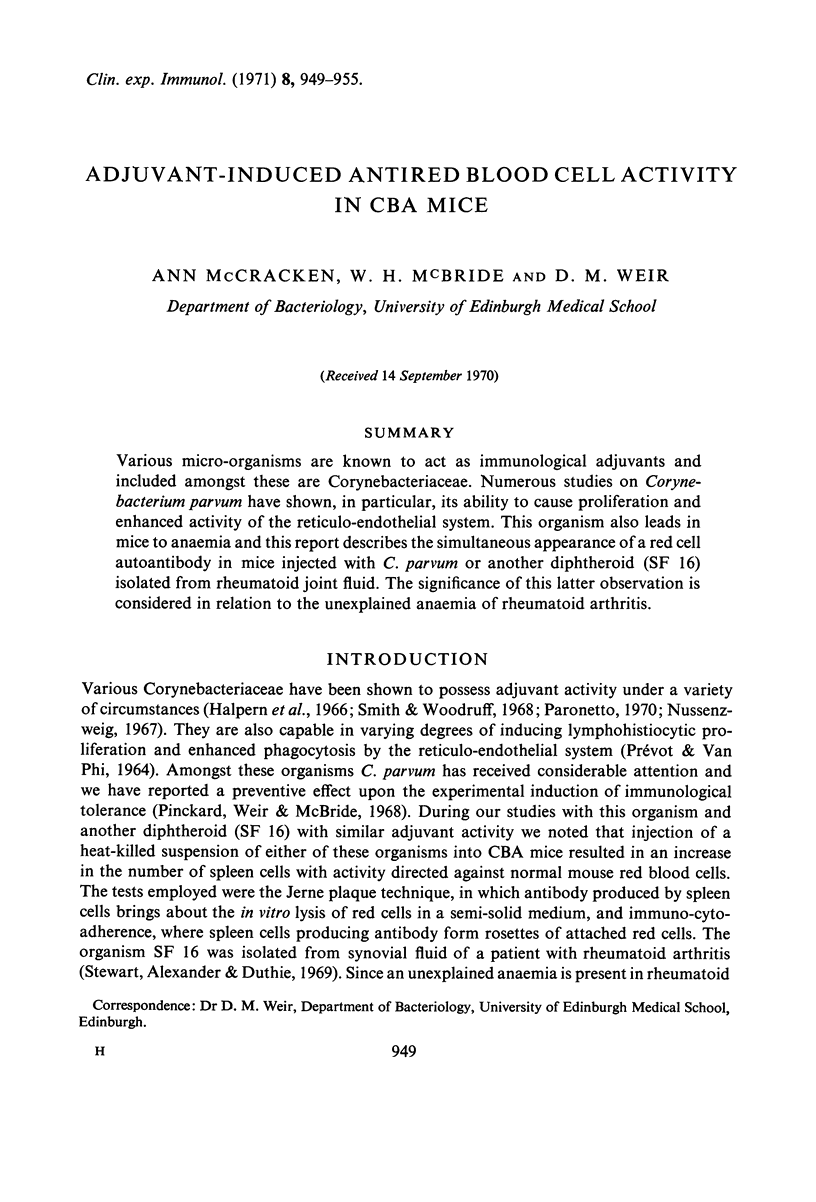
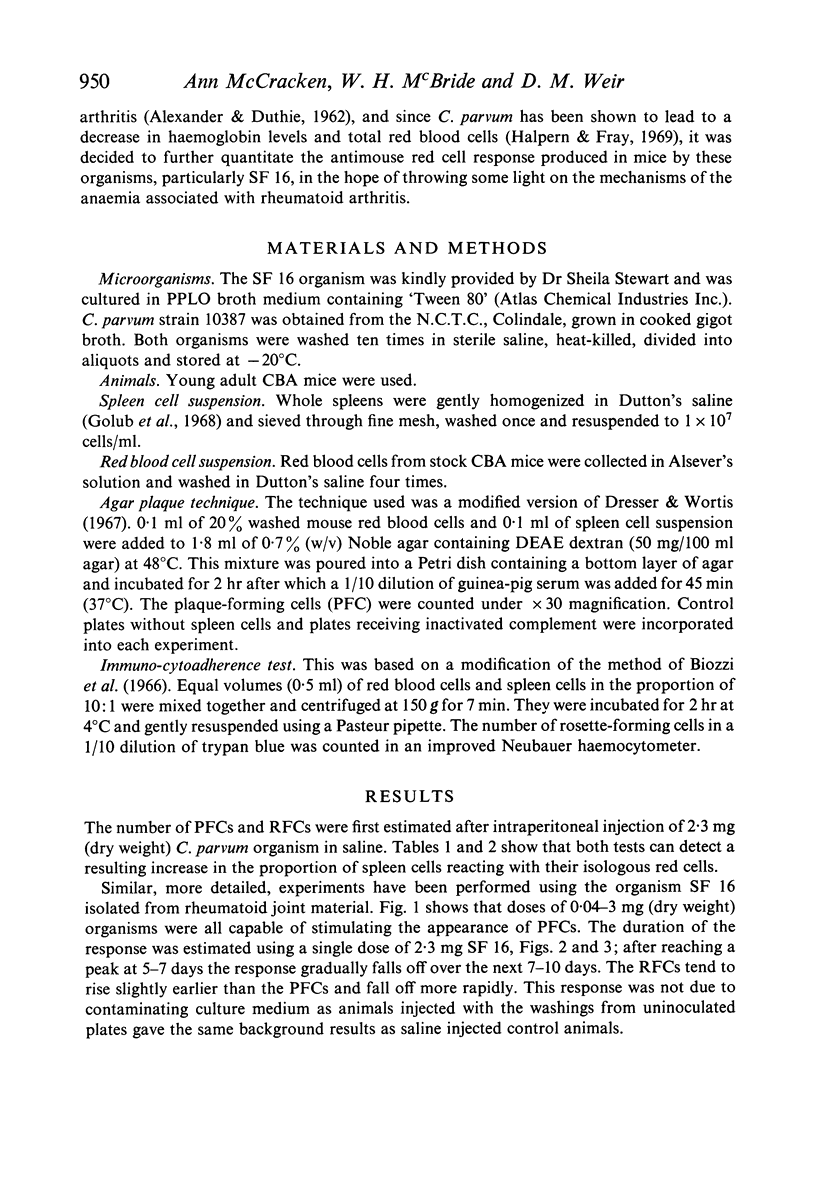

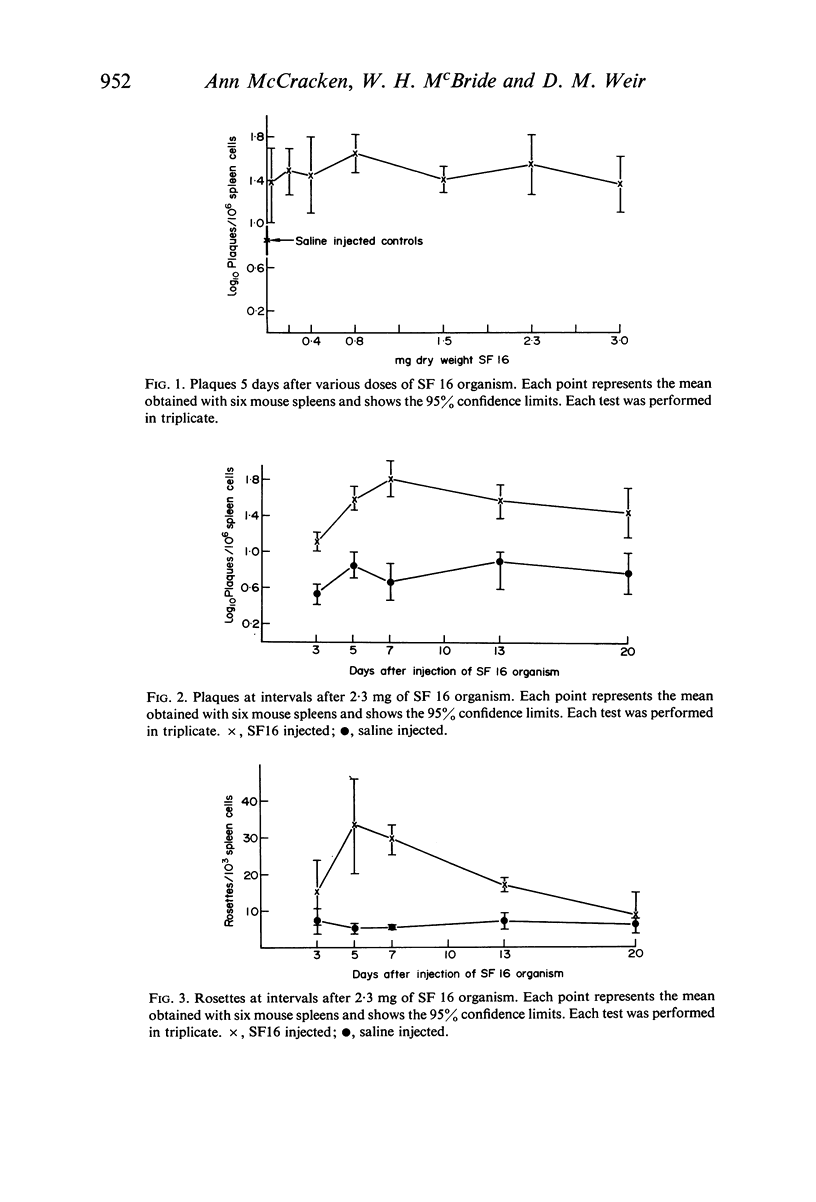
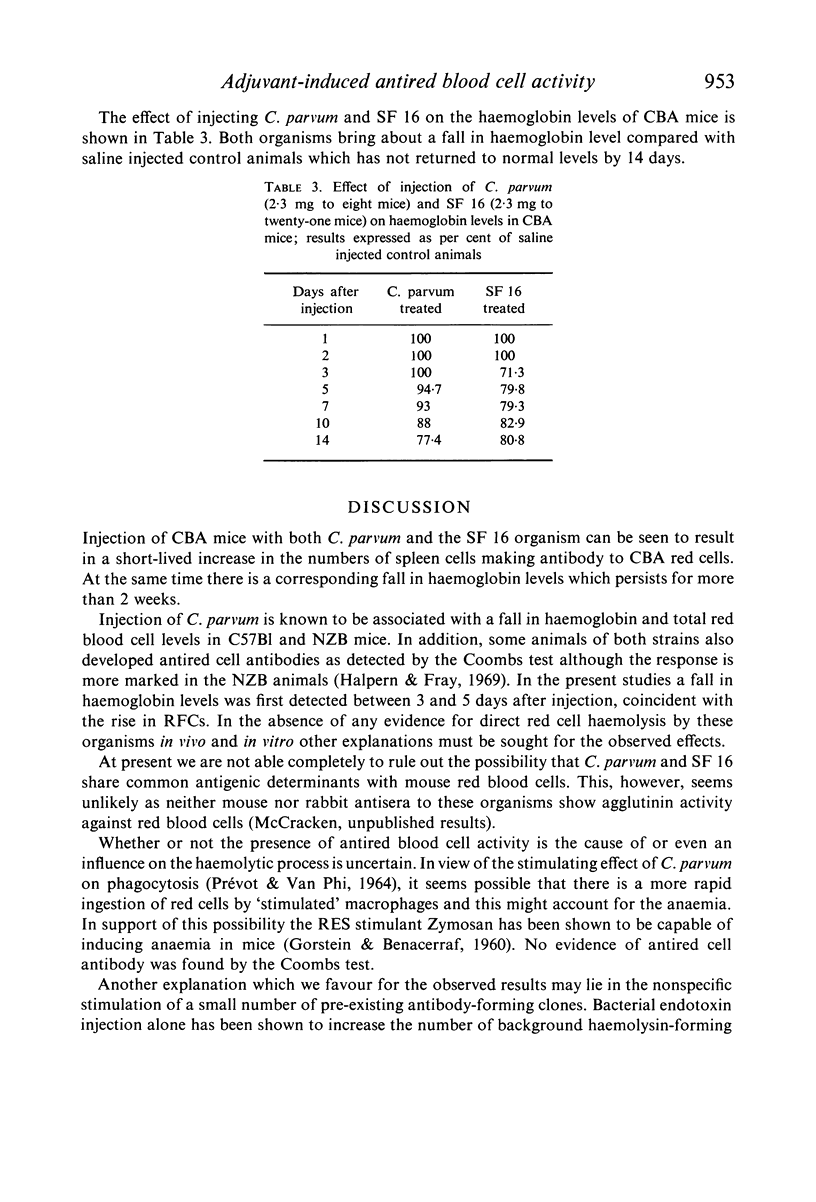
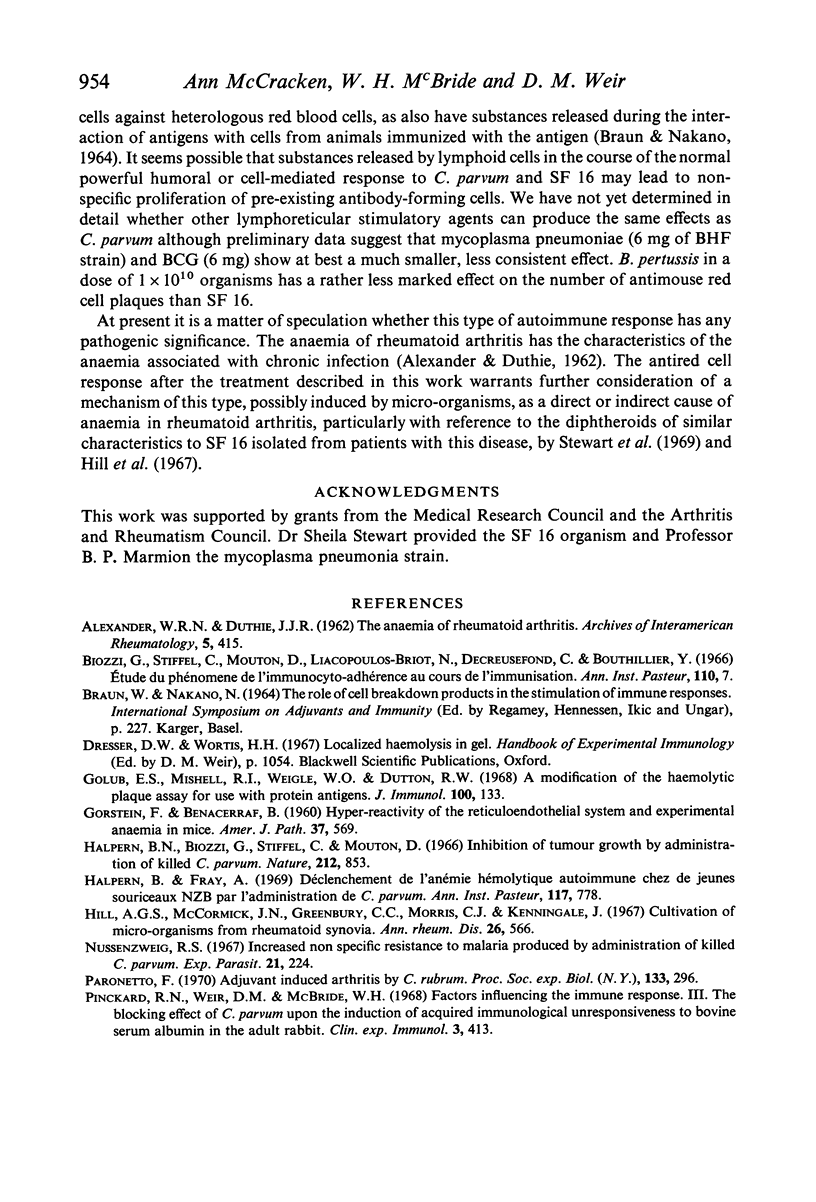
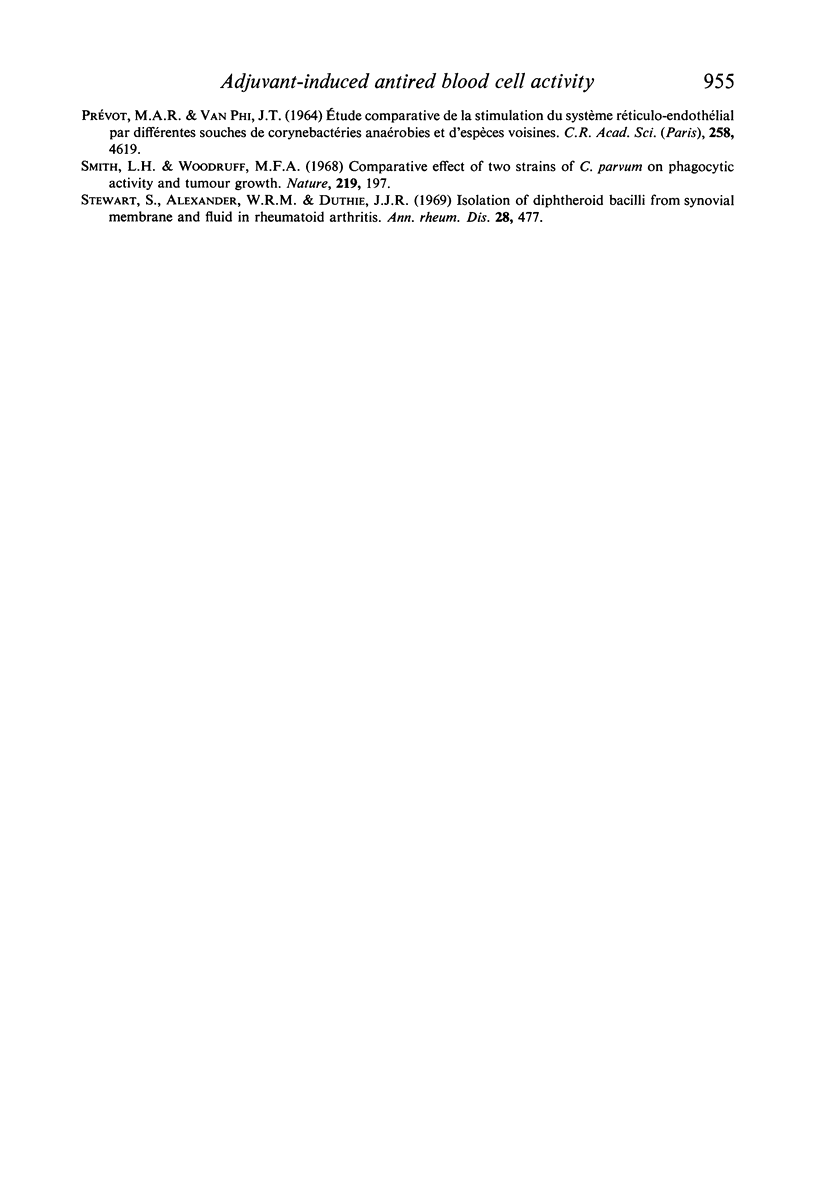
Selected References
These references are in PubMed. This may not be the complete list of references from this article.
- ALEXANDER W. R., DUTHIE J. J. [The anemia of rheumatoid arthritis]. Arch Interam Rheumatol. 1962 Sep;5:415–422. [PubMed] [Google Scholar]
- GORSTEIN F., BENACERRAF B. Hyperactivity of the reticuloendothelial system and experimental anemia in mice. Am J Pathol. 1960 Nov;37:569–582. [PMC free article] [PubMed] [Google Scholar]
- Golub E. S., Mishell R. I., Weigle W. O., Dutton R. W. A modification of the hemolytic plaque assay for use with protein antigens. J Immunol. 1968 Jan;100(1):133–137. [PubMed] [Google Scholar]
- Halpern B. N., Biozzi G., Stiffel C., Mouton D. Inhibition of tumour growth by administration of killed corynebacterium parvum. Nature. 1966 Nov 19;212(5064):853–854. doi: 10.1038/212853a0. [DOI] [PubMed] [Google Scholar]
- Halpern B., Fray A. Déclenchement de l'anémie hémolytique autoimmune chez de jeunes souriceaux NZB par l'administration de Corynebacterium parvum. Ann Inst Pasteur (Paris) 1969 Dec;117(6):778–789. [PubMed] [Google Scholar]
- Nussenzweig R. S. Increased nonspecific resstance to malaria produced by administration of killed Corynebacterium parvum. Exp Parasitol. 1967 Oct;21(2):224–231. doi: 10.1016/0014-4894(67)90084-7. [DOI] [PubMed] [Google Scholar]
- Pinckard R. N., Weir D. M., McBride W. H. Factors influencing the immune response. 3. The blocking effect of Corynebacterium parvum upon the induction of acquired immunological unresponsiveness to bovine serum albumin in the adult rabbit. Clin Exp Immunol. 1968 Jun;3(5):413–421. [PMC free article] [PubMed] [Google Scholar]
- Smith L. H., Woodruff M. F. Comparative effect of two strains of C. parvum on phagocytic activity and tumour growth. Nature. 1968 Jul 13;219(5150):197–198. doi: 10.1038/219197a0. [DOI] [PubMed] [Google Scholar]
- Stewart S. M., Alexander W. R., Duthie J. J. Isolation of diphtheroid bacilli from synovial membrane and fluid in rheumatoid arthritis. Ann Rheum Dis. 1969 Sep;28(5):477–487. doi: 10.1136/ard.28.5.477. [DOI] [PMC free article] [PubMed] [Google Scholar]


